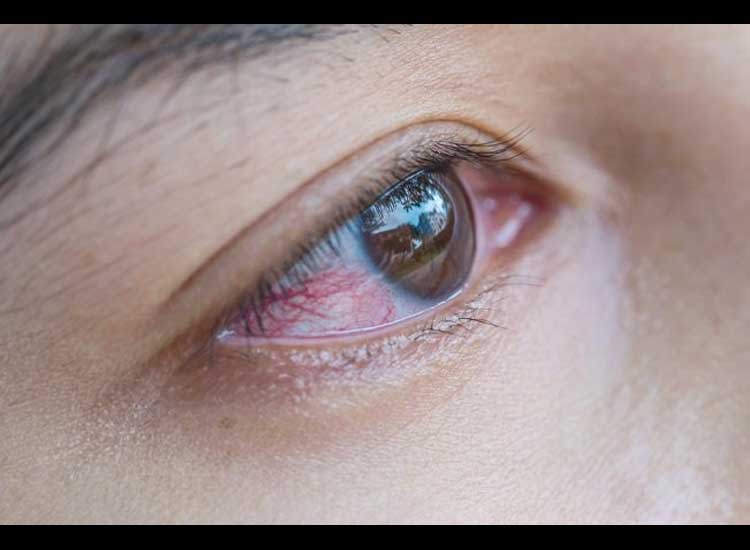Red Eye on One Side, Know the Causes and Prevention – One red eye can be caused by various conditions. One of the most common is the entry of a foreign object, such as dust, sand, or even metal fragments. To avoid red eyes, there are several preventive measures that can be taken.
One eye redness occurs when blood vessels on the surface of the eye dilate, causing the whites of one or both eyes to appear red. While many conditions can cause redness in both eyes, some only cause redness in one eye.
Causes and Symptoms of One Red Eye
Red eyes on one side are usually accompanied by other symptoms, such as itchy eyes, watery eyes, sore eyes, swollen eyes, or even blurred vision. However, each cause has different symptoms. Here is the explanation:
1. Got something in your eye
One red eye can be caused by something in the eye, which is the entry of a foreign object such as dust, sand, or dirt into the eye. As a result, the white part of the eye (sclera) or the colored part of the eye (cornea) is scratched so that the eye becomes red.
Getting something in your eye can happen when you clean the house, ride a motorbike, or cut metal without wearing protective glasses. Foreign objects entering the eye can cause redness, itching, stinging, and pain when opening the eye.
2. Use of contact lenses
Contact lenses can irritate and cause redness in one eye if you do not use them carefully. Red eyes can occur if the use of contact lenses is too long, not clean, and the lenses are damaged.
Red eyes due to incorrect use of contact lenses are usually accompanied by itchy eyes, blurred vision, and pain or discomfort when looking at light ( photophobia ).
4. Conjunctivitis
One red eye can also be caused by conjunctivitis , which is an inflammation of the membrane that lines the white of the eye and the inside of the eyelid. This inflammation is most often caused by an infection, either bacterial, viral, or fungal.
Conjunctivitis can affect only one eye or both eyes. This condition is also often accompanied by other symptoms, such as watery eyes, itching, discharge, and difficulty opening when waking up due to dried eye discharge at the end of the eyelid.
4. Blepharitis
One red eye can also be caused by blepharitis or inflammation of the eyelid. Blepharitis occurs when the oil glands in the eyelid become blocked, usually due to a bacterial infection.
In addition to one eye being red, blepharitis also causes itchy eyes, sore eyes that feel like there is something stuck in them, and swollen eyelids.
5. Episcleritis
Episcleritis is an inflammation of the episclera, the clear layer that covers the eyeball. Although the exact cause is unknown, some people with lupus , rheumatoid arthritis, and Crohn’s disease are at higher risk of developing this condition.
Redness of the eye is often the only symptom of episcleritis, but sufferers may also experience a sensation of pain or discomfort when looking at light.
6. Keratitis
One red eye can also be caused by inflammation of the cornea or keratitis . Injury to the eye or infection by bacteria, fungi, or viruses can cause keratitis.
This condition is characterized by symptoms such as red eyes, eye pain, excessive tearing, difficulty opening the eyes, photophobia, a feeling of obstruction in the eye, and decreased quality of vision which usually improves when the keratitis is treated and does not cause scarring in the cornea.
7. Corneal ulcer
A corneal ulcer is a wound on the cornea that usually occurs in only one eye. This condition is usually caused by a sharp foreign object that tears the cornea, an injury that directly affects the eye, or an infection that is not treated properly.
In addition to causing one red eye, corneal ulcers also interfere with the quality of vision, causing pain, swollen eyelids, and sensitivity to light.
8. Herpes ocular
Eye herpes or ocular herpes is an eye infection caused by the herpes simplex virus type 1 (HSV-1). Initial symptoms can be fluid-filled blisters on the skin around the eyes, then the eyes become red and sore.
If the virus that causes ocular herpes spreads to the cornea, it can become scarred and cause vision problems.
How to Prevent Red Eyes on One Side
Although not all causes of red eyes on one side can be prevented, you can reduce the risk of red eyes by doing several things such as:
- Avoid rubbing your eyes with dirty hands.
- Wash your hands before touching your eyes.
- Take care of the cleanliness of your contact lenses .
- Cleanse eye makeup thoroughly.
- Avoid staring at a computer or cell phone screen for too long.
- Wear sunglasses when doing activities under the hot sun.
- Use a helmet with a protective visor when riding a motorbike to prevent foreign objects from entering.
- Wear eye protection when doing anything that could potentially injure your eyes, such as cutting metal or working in a laboratory.
Here are some things you can do to prevent one red eye. Although red eyes can usually heal on their own, severe or frequent red eyes can refer to certain diseases.
Therefore, if you experience one red eye, accompanied by various other symptoms, such as continuous eye discharge, fever, severe pain, and decreased vision quality, immediately see a doctor for treatment.


No Responses